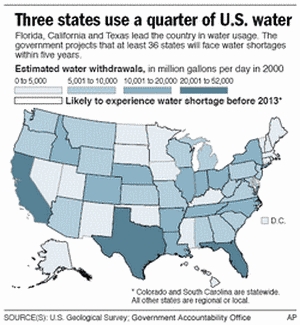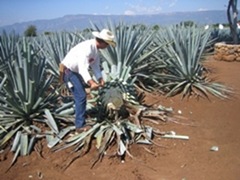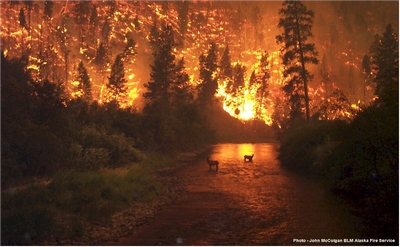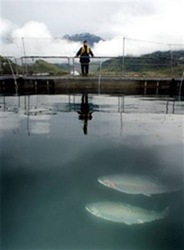 Which side are you on? Native species and habitat restoration is a worthy cause, but will you deem it so when you’re raking the gravel where your lawn used to be?
Which side are you on? Native species and habitat restoration is a worthy cause, but will you deem it so when you’re raking the gravel where your lawn used to be?
Singlebarbed readers thrive on fear and pestilence, but this issue is so large it’s likely to have all of us switching allegiances. It’s a “plea bargain” scenario, where all the crooks rebuff the cops until one cracks, then it’s every man for himself.
Will you insist on un-dammed streams and wild trout habitat when your house loses half its value, or will you cave and let them add more dams and reservoirs to preserve the lifestyle you have?
I think you’ll cave, you’re going to fold so fast even you’ll be surprised.
It’s one thing to bemoan the loss of pristine habitat, but when it’s your swimming pool they’re talking about, the Salmon can fend for themselves.
It’s a juggernaut issue, and it’s headed your way.
Across America, the picture is critically clear — the nation’s freshwater supplies can no longer quench its thirst.
The government projects that at least 36 states will face water shortages within five years because of a combination of rising temperatures, drought, population growth, urban sprawl, waste and excess.
That’s means you – a 72% chance the state you live in will be adding dams, reservoirs, and a lot of underground pipe, in the next 5 years. If those years are “dry” years, you’ll be doing it sooner.
That’s not the end of it, water rights and the property that owns them will be going parabolic in value, which will cause fishermen additional grief as many small ranches and farms that hold water rights will be gobbled up by corporations that smell massive water profits.
It’ll yield additional fences and “No Trespass” signs, much litigation, and the rise of “Donny Beaver” angling associations. Thirty-Six out of fifty suggests none of us are immune, including Mr. Beaver.
Desalinization is still somewhat in it’s infancy, and will likely have the same issues that nuclear plants have, where do you dump the salt? Many desalinization processes remove salt from seawater, while the water is quickly used the salt has to be disposed of in some manner, and in high concentration its as toxic to the living as nuclear waste.
Desalinization technology will mature and be a boon to states with ready access to the ocean, but with deficit spending still the rage, coastal states will likely use this as a source of revenue, selling excess capacity to inland states that lack access.
That means the price of water goes up. It also means some high dollar beach real estate will be tapped for plant construction, as thousands of plants will be needed per state, a lot of beach will lose its scenic appeal.
Intakes to those plants will be posted with “No Fishing” restrictions, as nothing fouls pumping gear more than nets, crab traps, and fishing line.
The price tag for ensuring a reliable water supply could be staggering. Experts estimate that just upgrading pipes to handle new supplies could cost the nation $300 billion over 30 years.
“Unfortunately, there’s just not going to be any more cheap water,” said Randy Brown, Pompano Beach’s utilities director.
This rabbit-hole just gets deeper and deeper, and even casual research reveals the potential for much disruption for all fishermen, both fresh and salt.
Of specific interest is how the “eminent domain” laws will be wielded by communities short on drinking water. Water rights and real estate close by could easily be pre-empted for the community good. Small truck farms whose only “crime” is proximity to a city, are the likely targets.
The Supreme Court ruled yesterday that local governments may force property owners to sell out and make way for private economic development when officials decide it would benefit the public, even if the property is not blighted and the new project’s success is not guaranteed.
Water conservation efforts will mean many more impoundments, canals, and underground pipes. Many will be covered to prevent evaporation, but wastewater reclamation will be considered “low hanging fruit.”
Florida’s environmental chief, Michael Sole, is seeking legislative action to get municipalities to reuse the wastewater.
“As these communities grow, instead of developing new water with new treatment systems, why not better manage the commodity they already have and produce an environmental benefit at the same time?” Sole said.
That’s the silver lining, plenty of Brownline fishing for warm water species. They may object to you wading in drinking water, but nobody will mind when you’re hip deep in crap.
I think we’re hip deep in crap already, and I’m just the fellow that remembered to bring tackle.
Technorati Tags: freshwater supply, desalinization, water conservation, brownlining, wastewater treatment, irrigation

 Which side are you on? Native species and habitat restoration is a worthy cause, but will you deem it so when you’re raking the gravel where your lawn used to be?
Which side are you on? Native species and habitat restoration is a worthy cause, but will you deem it so when you’re raking the gravel where your lawn used to be? The Singlebarbed Legal department is
The Singlebarbed Legal department is  The New York Times has an interesting article entitled,
The New York Times has an interesting article entitled,  I’m watching the
I’m watching the  The Nature Conservancy purchased the 1440 acre Child’s Meadow parcel near the southern entrance of Lassen National Park. The
The Nature Conservancy purchased the 1440 acre Child’s Meadow parcel near the southern entrance of Lassen National Park. The 
 I don’t care to linger on bad news, but the terrible truth of these salt water statistics cannot be ignored. I guess as long as the local grocery store has something on the shelves, these issues can be held at arm’s length. At 6% of the historic population remaining, is that arm long enough?
I don’t care to linger on bad news, but the terrible truth of these salt water statistics cannot be ignored. I guess as long as the local grocery store has something on the shelves, these issues can be held at arm’s length. At 6% of the historic population remaining, is that arm long enough? Fish farms have been on the ascendancy for some time, what with obscene pressure on wild fish stocks, and the Medical community advocating the eating of fish “two to three times per week.”
Fish farms have been on the ascendancy for some time, what with obscene pressure on wild fish stocks, and the Medical community advocating the eating of fish “two to three times per week.”